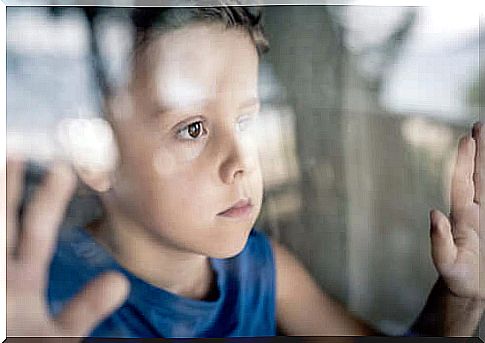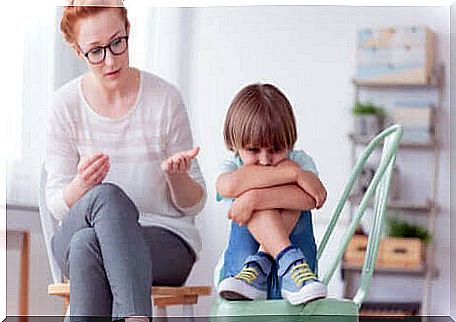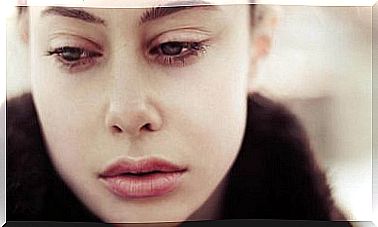What You Need To Know About Childhood Disintegrative Disorder

Also known as Heller’s syndrome, childhood dementia, symbiotic psychosis, or disintegrative psychosis, childhood disintegrative disorder is a very rare disorder that results, between the ages of 2 and 10, in the significant loss of previously acquired skills..
In DSM-IV-TR, this disorder was part of the pervasive developmental disorder, along with autism, Rett’s disorder, and Asperger’s disorder. However, this disorder disappeared from DSM-5. It is only diagnosed if the child also meets the criteria for autism spectrum disorder.
This is called “autism spectrum disorder associated with a known medical condition (childhood disintegrative disorder)”.
What are the symptoms of childhood disintegrative disorder and how is it diagnosed? What are the causes and what treatments are beneficial for these children? We answer these questions in the rest of this article.

A little history
Around 1905, Sante de Sanctis (1862-1953), an Italian physician, psychologist and psychiatrist, described a picture similar to the disintegrative disorder of childhood, which we will see later. He created the category of dementia early on, in which he included various disorders involving mental retardation.
Later, in 1908, Theodor Heller, an Austrian educator, described several cases of disintegrating psychosis. It was a disease that begins around the age of 4, after a period of normal development. Hence, the disintegrative disorder of childhood is also known as Heller syndrome.
The name “symbiotic psychosis” is due to Margaret Mahler. The latter established a link between constitutional factors and a kind of infantile psychosis that appeared between the ages of 3 and 6, which she called symbiotic psychosis.
Diagnosis of childhood disintegrative disorder
As commented at the beginning of the article, the DSM-5 eliminated this disorder so that it would not be diagnosed as a medical illness. However, there is a specific adjunct for autism spectrum disorder: “associated with a known medical condition”. This helps diagnose autism spectrum disorder and childhood disintegrative disorder.
The DSM-IV-TR described the diagnostic criteria for this disorder. During the first two years of life, development is apparently normal. There is nothing to report in terms of communication, social relationships, play and adaptive behavior.
However, from the age of 2 and before the age of 10, significant losses of skills already acquired begin to be felt. These losses concern at least two of the following areas:
- Expressive and receptive language.
- Social skills or adaptive behavior.
- Bowel or bladder control.
- Game.
- Motor skills.
In addition, we observe an alteration in two of the following areas: qualitative alteration of social interactions, modes of communication or behavior, interests and repetitive and stereotypical activities. This alteration coincides with the alterations inherent in autism.
Finally, to make the diagnosis, these symptoms cannot be better explained by the presence of another generalized developmental disorder or by the presence of schizophrenia. It is an essential condition.
Symptoms of childhood disintegrative disorder
- Loss of language skills. Acquired vocabulary and the ability to communicate with others, including the ability to receive, are lost.
- Problems in social relations and adaptive behavior. Reduced interaction with their peers and families leads children to isolate themselves. This is due to an absolute disinterest in the environment.
- Loss of motor skills. Children begin to experience gross motor difficulties such as running (or walking, in more severe cases). This is accompanied by obvious difficulties in fine motor skills (picking up objects with the hand …)
- Inability to control the sphincters. Children typically gain bowel and bladder control between the ages of 2 and 4. Children with childhood disintegrative disorder lose this ability.
- Qualitative alteration of social interaction which can manifest itself as a deficit in non-verbal communication, an inability to establish social relationships, a lack of social or emotional reciprocity, etc.
- Stereotypical behaviors and restricted interests. Such as inflexible adherence to certain routines, intolerance of change, driving mannerisms and stereotypes, as well as strange interests (such as liking the edges of objects, rather than the object as a whole) …

Cause and treatment
The origin of childhood disintegrative disorder is not entirely clear. No concrete mechanism has yet been found.
Possible causes of the onset of this disorder include damage to the central nervous system during development and the onset of certain neurological diseases, such as tuberous sclerosis. However, at the moment, there is no evidence of this.
As discussed earlier, childhood disintegrative disorder is a very rare disorder (by the way, more common in men). And unfortunately, there is no cure. It is simply possible to offer treatments that improve the health and quality of life of these children and that strengthen the skills they retain.
Interventions
- Pharmacotherapy. It can help reduce stereotypical behaviors (which in many cases can be self-destructive) and symptoms of other co-morbid disorders.
- Nutritional therapy. It guarantees the supply of nutrients, because these children often have problems chewing and swallowing food.
- Behavioral therapy. It helps reduce unwanted behaviors, such as stereotypies, and helps improve preserved skills. In some cases, a lost skill can be redeveloped.
- Alternative therapies. They generally accompany medical and behavioral treatments. Therapies such as music therapy or equine therapy are frequently used. They have been shown to be beneficial for children with this or other neurodevelopmental disorder.
By definition, these symptoms appear between 2 and 10 years of age. They can appear abruptly or insidiously and may be accompanied by prodromal symptoms such as irritability, hyperactivity, anxiety, or loss of certain abilities.
Once the disintegrative disorder is established, a slight improvement may occur. But social, communication and behavioral impairments are fairly constant and stable throughout life. Therefore, any treatment capable of providing an improvement, no matter how small, in the symptoms and quality of life of these children is welcome.










